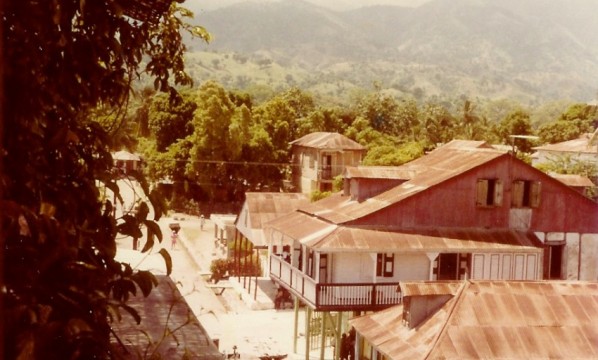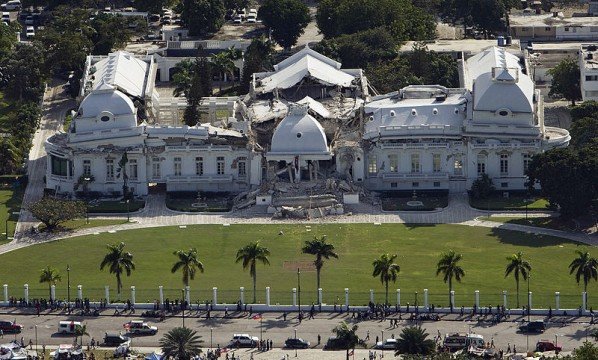Tourist places of Haiti
Haití y turismo aparecen como dos conceptos contrapuestos. Es la imagen de la pobreza, de la desolación, de la tristeza de miles de familias, de la desnutrición y, en el peor de los casos, de la muerte. Y a la hora de viajar, el punto de mira de todo destino turístico pasa por la diversión, la riqueza cultural, el legado histórico, la evasión de problemas en algunos casos y cuando no, la fiesta. Por eso, a priori, Haití no es un lugar de referencia para las agencias de viaje ni para los turistas. Al igual que tampoco lo son otros muchos lugares de África, como Etiopía, u otras partes del mundo de los que solo nos llegan imágenes de pobreza a través de los medios de comunicación. Pero esto no es así. Y no lo es porque Haití tiene algo más que pobreza. ¿Quién dijo que no existen lugares turísticos en Haití?
Let's briefly review its geographical location. Haiti (officially, Republic of Haiti) is a country of the Antilles, framed between the Atlantic and the Caribbean, between the Dominican Republic and the Republic of Cuba. The territory covers different islands: the island of Gonâve, the island of Tortuga, the island of Vaches and the archipelago of the Cayemites islands. As a whole, they total a total of 27,750 km², housing a population of more than ten million inhabitants, of which almost 36% are under 15 years old and approximately 73% have not yet passed the age of 35. You can see, it is a population that is mostly young, with low life expectancy due to the diseases contracted by the youngest children and that trigger the infant mortality rates. The capital and main city of the country is the well-known Port-au-Prince. And the official languages with which we can defend ourselves there are French and Haitian Creole, the latter based on French with African influences and vocabulary of Spanish, which, with a bit of luck, we will find someone who also knows something.
What does Haiti have that makes it especially attractive? If you're still wondering, it's about its long and legendary history, with a rich culture that mixes French, African and Spanish influences. Haiti is an unknown country, with sun, beaches and luxury hotels. It's music and merengue, sculpture and painting, voodoo and carnival. A wonderful island, full of natural and cultural riches, with beautiful colonial cities such as Port-au-Prince, Cap Haitien and Jacmel. Other tourist attractions of Haiti may well be the Barbancourt castle, the Ville Bonheur and its virgin beaches of black sand.
Let's talk about Port-au-Prince. The capital of the country is a city of constant movement and activity. During the day, the streets are filled with the rays of a leaden sun; At night, it is lit with the little lights of street vendors. At one time or another, the street shows will take us to distant places such as Istanbul or New Delhi, but we will see something different in the environment, a unique flavor that is only found in the Caribbean. Among the tourist sites of the capital of Haiti we can visit the National Palace (a glass of the Petit Palais de Versailles) and the square that surrounds it: Champ de Mars, full of buildings of the 30s, among which the Museum of Art from the National Pantheon and Casa Defly, now an adorable antique store. To move around we can always make use of public transport. We find the famous tap-taps packed in the Mercado de Hierro or Mercado Vallières. Before getting into one of these striking trucks, it would not be bad to have a look at the Market and see the little treasures it hides inside: from wooden sculptures to mahogany tableware.
Being in the Caribbean could not miss the rum and less in Haiti, which has eternally enjoyed fame for its delicious rums made from fermented cane juice. For this reason, one of the most popular tourist areas in Haiti is the Ron Barbancourt Distillery, where rum is produced enriched with mango, coconut, orange and coffee, among other flavors. A delight that we can enjoy in the capital. Speaking of Barbancourt, it is also advisable to visit the Castle that bears the same name. A castle, by the way, with a legend of classic love behind him between a German perfume manufacturer, Rudolph Linge, and a young Haitian, Jane Barbancourt. Apparently, they traveled to New York to see the Cinderella movie and that Walt Disney film extracted the layout of his castle.
As in any other place, the churches of reference can not be absent either. In Haiti we find the Cathedral of the Holy Trinity where we can observe biblical murals that describe the birth of the current Naif art of the forties. Of course we can also witness colonial architecture, because none of that has been lost in the country. Cap Haitien is in that sense the best exponent. Considered as the "Paris of the New World", it conserves streets, squares and colonial buildings of great beauty, as well as the ruins of the Royal Palace of Sans Souci of 1813, next to which was located an entire administrative complex (school, printing, prison, hospital, barracks, stables, chapel and other dependencies). The place, which occupied 8 hectares, was built in the middle of civil war, after the Independence of Haiti in 1804 and the death of Jean-Jacques Dessalines in 1806.
In every country there is also something that has always been declared a World Heritage Site by UNESCO and in this case is the Citadel (or Citadelle), for its great historical and cultural value. A large fortress located at the top of the hill La Ferrière, built between 1805 and 1820, with walls 4 meters wide and 40 high. The castle was complemented by the Fortifications of Ramiers, which constituted an annex formed by a residence and four smaller forts.
Tourist sites in Haiti
What about Haitian beaches? There are those who believe that this is not their fortress, that beaches can not compete with those of Cuba and other islands in the region, and that Haiti will disappoint the sun and beach enthusiasts, but opinions are mixed. The country offers something different that neither Cuba nor Benidorm gives you. Beaches like Ibo, Kyona and Ouanga do not leave anything to be desired, nor the black sand beach in the vicinity of Jacmel. Nearby, there is another great tourist attraction in Haiti: a wonderful natural landscape called Bassin Bleu, with three splendid waterfalls and a fantastic route through Mount Puilboreau.
It must be said that outdoor activities are ideal, especially for lovers of water sports such as diving. Anyone, expert or novice, can undertake a trip to Sand Cay (Cayo Arenoso) by means of boats with a glass bottom that allows you to appreciate the best reefs in the Caribbean. And at any time, you can immerse yourself in the water and enjoy the capricious nature of the place. The absence of tourists makes possible the daily practice of this type of sports that enjoy the best conditions in the Caribbean. An underwater spectacle that you should not miss when diving is the exploration of the naval remains found in the Gulf of Gonaives: dozens of English, French, Dutch and Spanish ships wrecked on the bottom of the Haitian coast as a result of the naval clashes of yesteryear .
All this makes Haiti. Poverty, culture, history and beauty complement each other in an amazing way. It is true that it is a different, risky, adventurous journey. Due to the extreme political, economic and social circumstances that exist in the country, its tourist infrastructure is not fully developed, so there are still problems in finding activities to be carried out outside the hotels, but this is being overcome little by little. Such is the case of the area of Pétionville, another tourist site in Haiti, where it is already possible to enjoy a nightlife with acceptable offers to practice salsa or merengue. The Café des Arts, Regis and Oloffson stand out, where there are live music shows and dance sessions.
The art, the colonial past and the great religious fervor of its inhabitants can not make forget the daily rudeness. But tourist places of Haiti exist; some unique, others hard to find elsewhere in the world. Haiti is a captivating and mysterious country because of its culture. You have to discover it from the inside. Knowing in advance the economic and political situation, it is a trip for the most adventurous. For those who want to discover the most effervescent island of the Antilles. A Haiti that struggles to return to be a pearl in the Caribbean.

